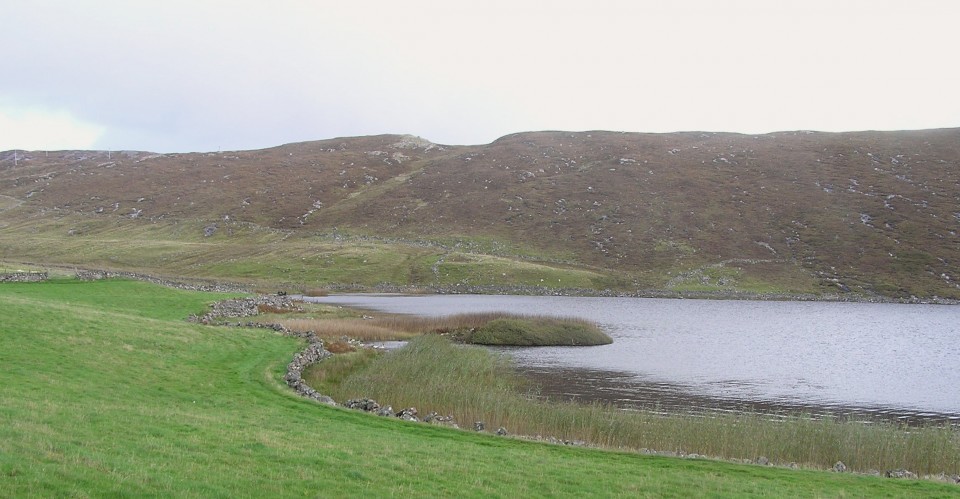You are using an out of date browser. It may not display this or other websites correctly.
You should upgrade or use an alternative browser.
You should upgrade or use an alternative browser.
- Joined
- Jul 19, 2004
- Messages
- 29,622
- Location
- Out of Bounds
Newly published research indicates crannogs were used as agricultural platforms and feasting / celebratory locations.
FULL STORY: https://www.livescience.com/ancient-elites-partied-on-crannogs-ukArtificial islands surrounding British Isles were used for ancient parties, archaeologists find
Just as waterfront mansions are status symbols for today's rich and famous, ancient artificial islands in the British Isles known as crannogs may have been used by elites to display their power and wealth through elaborate parties, a new study finds.
A crannog is "an artificial island within a lake, wetland, or estuary," Antony Brown of UiT Arctic University of Norway and colleagues wrote in a study published online Wednesday (Sept. 28) in the journal Antiquity (opens in new tab). Hundreds of crannogs were created in Scotland, Wales and Ireland, between 4,000 B.C. and the 16th century A.D., by building up a shallow reef or an elevated portion of a lakebed with any available natural material — such as stone, timber or peat — to a diameter of nearly 100 feet (30 meters). A lot of trade and communication occurred along the lakes and estuaries where crannogs were built. Used as farmsteads during the Iron Age (eighth century B.C. to the first century A.D.), crannogs evolved into elite gathering places in the medieval period (fifth to the 16th centuries A.D.), according to evidence of feasting and plentiful artifacts, such as pottery, uncovered there.
Wetland sites are much more difficult to study than those on land, so the archaeology of crannogs is a relatively new undertaking. Brown and colleagues investigated one site in Scotland (500 B.C. to A.D. 10) and two in Ireland (A.D. 650 to 1300) to better understand the purpose of these crannogs. They did it by sampling each site's halo, or the spread of archaeological material from the center of the site. ...
Endlessly Amazed
Endlessly, you know, amazed
- Joined
- Aug 6, 2020
- Messages
- 1,379
- Location
- Arizona, USA
What are you dressed up as?Im currently working at the Crannog Centre.
Yes, I am dressed up!
maximus otter
Recovering policeman
- Joined
- Aug 9, 2001
- Messages
- 13,940
'Surprise' find on Highland loch rewrites timeline of ancient water dwellers
Loch na Claise in Assynt witnessed human activity far earlier than previously known, with archaeologists believing they have may have found the first crannog from the Neolithic period on mainland Scotland.
Crannogs were dwellings built on artificial islands and may have been used as houses, gathering places or ritual sites.

The crannog at Loch na Claise has long thought to date to the Iron Age, from around 450BC, but analysis of sediments from the loch has rewritten the timeline of the site, with it now known there was human activity there during the Neolithic era, sometime around 3200BC.
Several Neolithic crannogs are known across the Outer Hebrides, but the earliest crannogs in the Highlands have – until now – dated to the Iron Age.
The breakthrough in understanding of life at the loch was discovered by Dr Louisa Matthews, who conducted the research on the sediment core for her doctoral thesis at Newcastle University.
Paywalled: https://www.scotsman.com/heritage-a...es-timeline-of-ancient-water-dwellers-4392199
https://apple.news/AdBiY95lmR-q9hL-WzjK6UQ
maximus otter
Loch na Claise in Assynt witnessed human activity far earlier than previously known, with archaeologists believing they have may have found the first crannog from the Neolithic period on mainland Scotland.
Crannogs were dwellings built on artificial islands and may have been used as houses, gathering places or ritual sites.

The crannog at Loch na Claise has long thought to date to the Iron Age, from around 450BC, but analysis of sediments from the loch has rewritten the timeline of the site, with it now known there was human activity there during the Neolithic era, sometime around 3200BC.
Several Neolithic crannogs are known across the Outer Hebrides, but the earliest crannogs in the Highlands have – until now – dated to the Iron Age.
The breakthrough in understanding of life at the loch was discovered by Dr Louisa Matthews, who conducted the research on the sediment core for her doctoral thesis at Newcastle University.
Paywalled: https://www.scotsman.com/heritage-a...es-timeline-of-ancient-water-dwellers-4392199
https://apple.news/AdBiY95lmR-q9hL-WzjK6UQ
maximus otter
Last edited:
Kondoru
Beloved of Ra
- Joined
- Dec 5, 2003
- Messages
- 10,644
https://crannog.co.uk/
The Scottish Crannog Centre is looking for folk to build a new crannog next spring.
The Scottish Crannog Centre is looking for folk to build a new crannog next spring.

